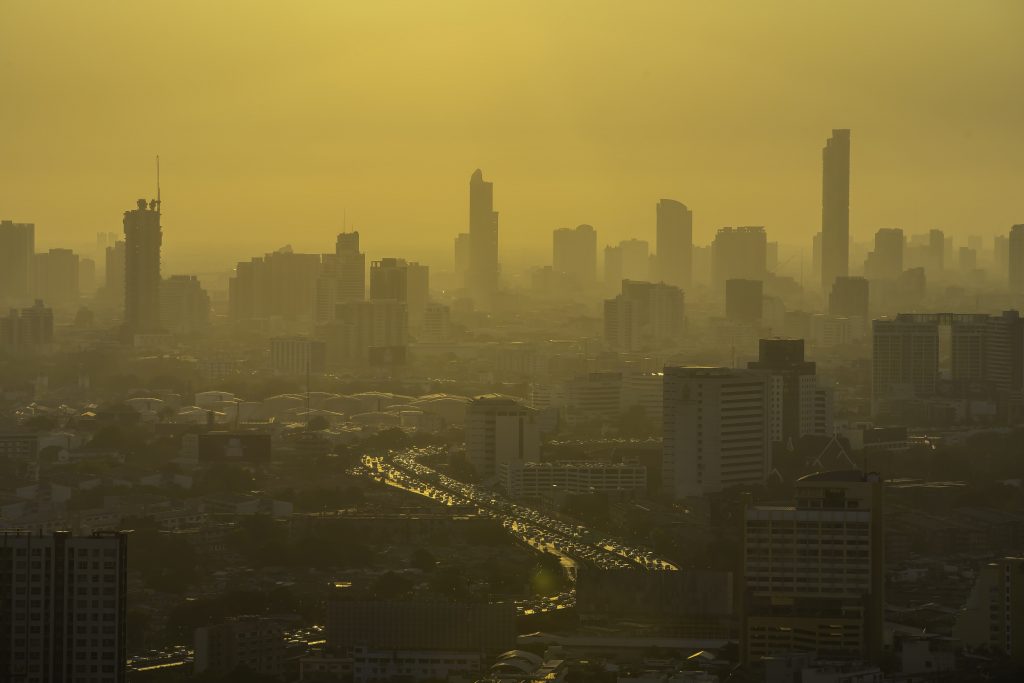The theme for this issue is “Climate Change and the Urban Church.” As the world enters deeper into climate crisis, it has become increasingly clear that cities reflect not only the catastrophic effects of climate change, as seen in floods after more and more severe storms, droughts that leave cities without running water, and rise in fatalities due to heat in urban spaces that lack heat-mitigating greenery, they also reflect the great inequality between neighborhoods. Poorer neighborhoods suffer the consequences of climate change much more than wealthier neighborhoods. In the United States, this inequality has a racialized history and the pattern of racial inequality is repeated in the effects of climate change. Communities that have been redlined in the last century (and suffered are much hotter in the summer today than wealthier ones.1 And, as one of this issue’s authors Allen Drew points out, the wealthy are the most responsible for the climate crisis but are best able to escape its consequences; the poor are the least responsible for it, yet bear the brunt of the crisis.2 A faithful urban witness will see this reality in our cities, and seek kingdom healing for the world, especially in those places most hurt by the climate crisis.
Two of the articles in this issue highlight such efforts. Allen Drew, in “Merging Our Missional Silos: A Redemptive Opportunity in the Climate Crisis,” shares the lessons he learned through his work as a climate activist in the Hunting Park neighborhood of Philadelphia. He recounts how climate justice, serving low-income urban communities and discipleship used to occupy separate but unrelated lanes for him; but these came together for him into an integrated mission of the church as he worked to empower residents of Hunting Park.
In “From Plantation to Shalom Economics: How a Cooperative of Faith Communities Reweaves Communion in Urban and Ecological Systems,” Nathan Davis Hunt tells of efforts by Community Purchasing Alliance, a cooperative of institutions, mainly urban churches, that use their collective purchasing power “to support their own needs and as a means to pursue racial and environmental justice.”3
In keeping with the theme of the issue, Susan S. Baker reviews Caring for Creation: The Evangelical’s Guide to Climate Change and a Healthy Environment by Mitch Hescox and Paul Douglas. Written in 2015, this book was addressed to conservative evangelicals as call to action on climate change–a window into a different time, in many ways.
We also present pieces that are off-theme but on-time. Christopher J. Freet argues that a both/and approach to set theories–both “bounded set” thinking and “centered set” thinking–is more conducive to healthy mission of the church than an either/or approach, in “Mending Fences: Viewing Set Theory Through a “Both/And” Lens.”
In “Missional Identity Development in Urban Christians,” Matthew Hallam points out the critical need to center the deep, slow work of urban missional discipleship, which might get forgotten, and indeed has been forgotten, in the urgency of urban mission mobilization.
Three more book reviews are included in this issue. Gino Curcuruto reviews Who Moved My Neighborhood: Leading Congregations Through Gentrification and Economic Change by Mark E. Strong. Gentrification has been one of the biggest forces changing American cities in the last two decades, and much work needs to be done by urban Christians in this area, with implications for racial justice, housing, political economics, and so on. We are looking forward to addressing gentrification more in upcoming issues. Steve Taylor reviews Malestrom: How Jesus Dismantles Patriarchy and Redefines Manhood by Carolyn Custis James, which is the Second Edition of her 2015 book. In a time when churches are increasingly embroiled in self-inflicted damage arising out of what many have named “toxic masculinity,” we are in need of biblical vision and guidance on this subject if we are to construct a healthier witness. Finally, Jason Rowland reviews How We Can Win: Race, History, and Changing the Money Game That’s Rigged by Kimberly Jones, a book written at a popular level that urban practitioners may find helpful as a resource for equipping young people in their communities for economic empowerment.
Young people growing up in urban communities today face many grave challenges–climate change being one of the biggest. But what has been presented in this issue demonstrates that urban churches can play a role in shaping a more peaceable future for them, even when it comes to a seemingly overwhelming problem such as climate change. Discipleship in this area will become a crucial part of what it means for the Church to be a witness to God’s reign of shalom as the world enters deeper into climate crisis in the years to come. In all of this, we do not lose hope in Christ and his promise to renew all things–our creation that groans for its redemption, and our cities that yearn for his rule.
Shalom,
Kyuboem Lee (with Susan S. Baker and Kimberlee Johnson)
Philadelphia, USA
Notes
1 Brad Plumer and Nadja Popovich, “How Decades of Racist Housing Policy Left Neighborhoods Sweltering,” New York Times, August 24, 2020, https://www.nytimes.com/interactive/2020/08/24/climate/racism-redlining-cities-global-warming.html.
2 Allen Drew, “Merging Our Missional Silos: A Redemptive Opportunity in the Climate Crisis,” Journal of Urban Mission 8, no. 1 (July 2022), https://jofum.com/articles/merging-our-missional-silos-a-redemptive-opportunity-in-the-climate-crisis.
3 Nathan Davis Hunt, “From Plantation to Shalom Economics: How a Cooperative of Faith Communities Reweaves Communion in Urban and Ecological Systems,” Journal of Urban Mission 8, no. 1 (July 2022), https://jofum.com/case-studies/from-plantation-to-shalom-economics-how-a-cooperative-of-faith-communities-reweaves-communion-in-urban-and-ecological-systems.



2 thoughts on “Letter from the Editors: Volume 8, Issue 1”
I am delighted that the Urban Mission Journal is continuing its excellent work. And I am thankful that Missio Seminary “caught the vision” which the Journal represents.
Thank you, Sam!